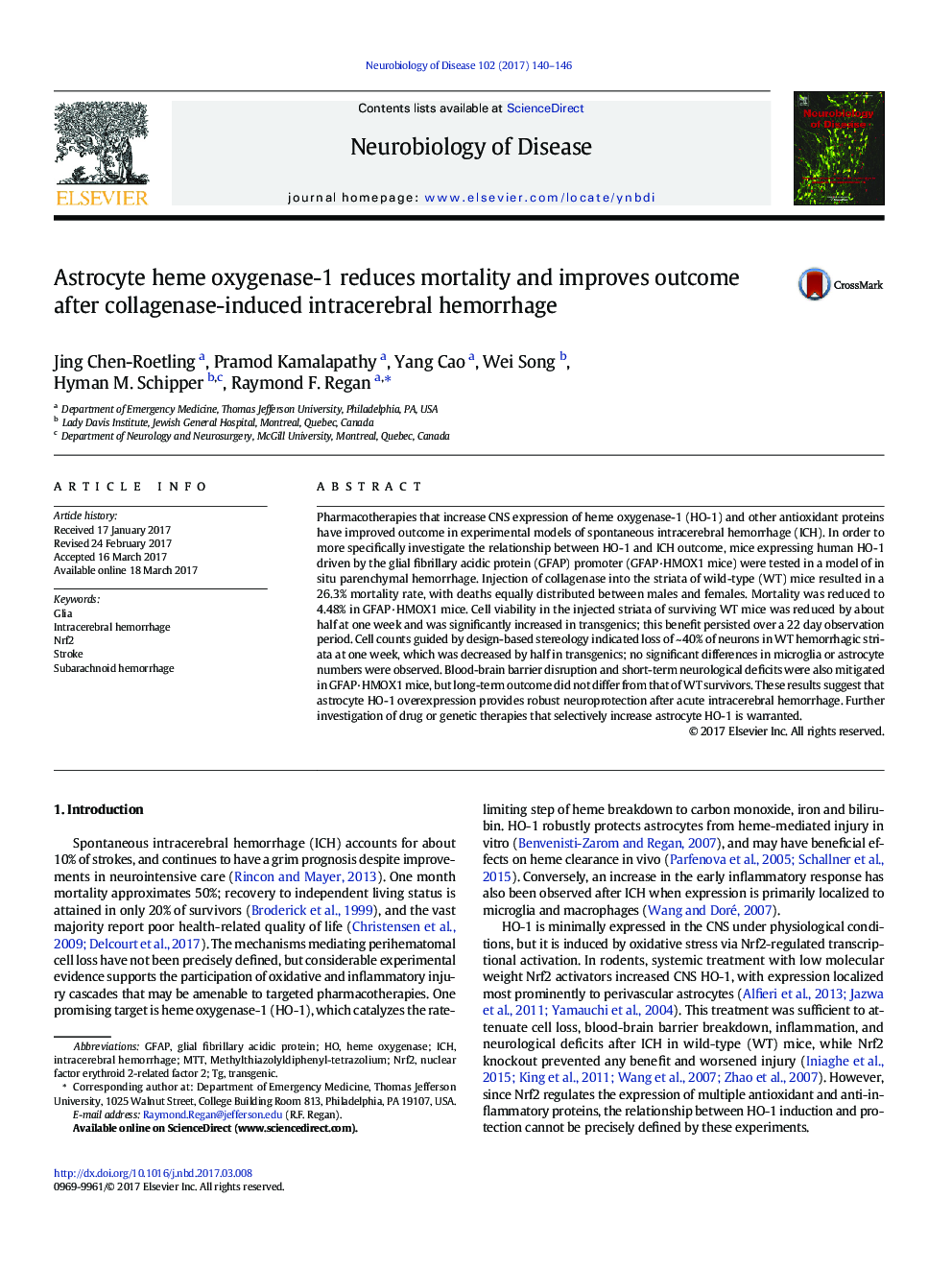| کد مقاله | کد نشریه | سال انتشار | مقاله انگلیسی | نسخه تمام متن |
|---|---|---|---|---|
| 5630563 | 1580619 | 2017 | 7 صفحه PDF | دانلود رایگان |

- Astrocyte heme oxygenase-1 (HO-1) overexpression reduced mortality after ICH.
- HO-1 transgenic mice had less neuron loss and blood-brain barrier disruption.
- Early neurological deficits were also reduced in the HO-1 mice.
- Therapies that increase astrocyte HO-1 may be beneficial after ICH.
Pharmacotherapies that increase CNS expression of heme oxygenase-1 (HO-1) and other antioxidant proteins have improved outcome in experimental models of spontaneous intracerebral hemorrhage (ICH). In order to more specifically investigate the relationship between HO-1 and ICH outcome, mice expressing human HO-1 driven by the glial fibrillary acidic protein (GFAP) promoter (GFAP·HMOX1 mice) were tested in a model of in situ parenchymal hemorrhage. Injection of collagenase into the striata of wild-type (WT) mice resulted in a 26.3% mortality rate, with deaths equally distributed between males and females. Mortality was reduced to 4.48% in GFAP·HMOX1 mice. Cell viability in the injected striata of surviving WT mice was reduced by about half at one week and was significantly increased in transgenics; this benefit persisted over a 22 day observation period. Cell counts guided by design-based stereology indicated loss of ~ 40% of neurons in WT hemorrhagic striata at one week, which was decreased by half in transgenics; no significant differences in microglia or astrocyte numbers were observed. Blood-brain barrier disruption and short-term neurological deficits were also mitigated in GFAP·HMOX1 mice, but long-term outcome did not differ from that of WT survivors. These results suggest that astrocyte HO-1 overexpression provides robust neuroprotection after acute intracerebral hemorrhage. Further investigation of drug or genetic therapies that selectively increase astrocyte HO-1 is warranted.
Journal: Neurobiology of Disease - Volume 102, June 2017, Pages 140-146